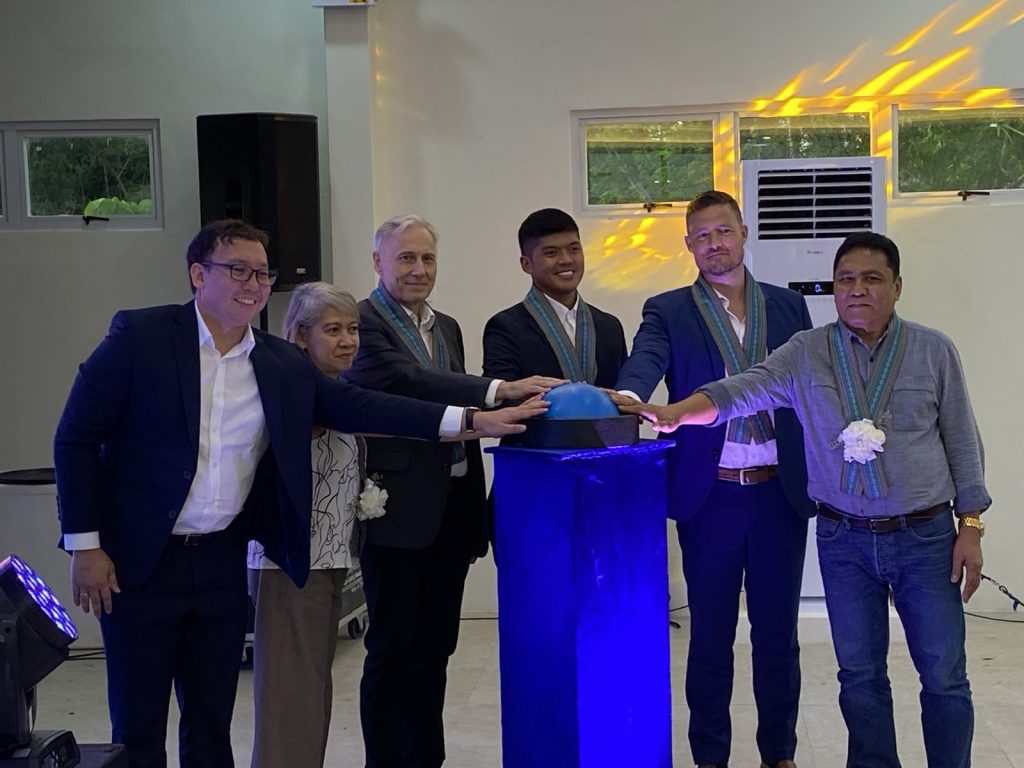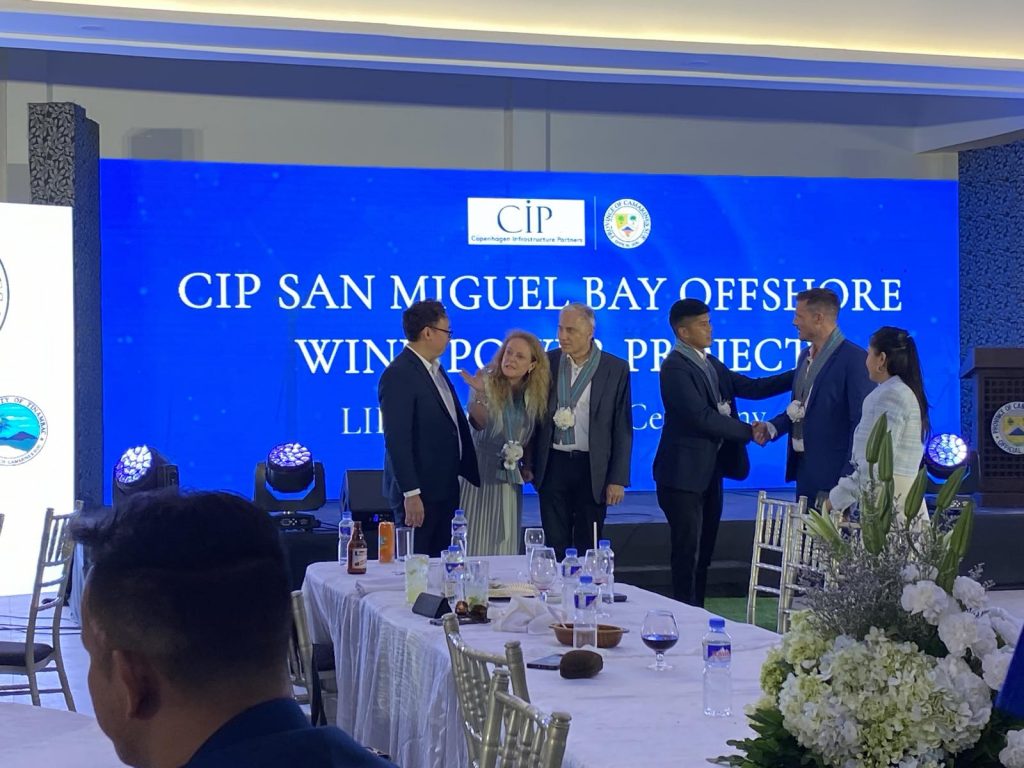1-gigawatt offshore wind towers soon to rise in CamSur bay
By Veronica Uy
PILI, CAMARINES SUR—One-gigawatt offshore wind towers are expected to soon rise in San Miguel Bay here after a renewable energy developer from Denmark last week deployed its state-of-the-art wind measurement LIDARs (light detection and ranging devices) in the province as a scoping first step.
At the LIDAR launch of the Copenhagen Infrastructure Partners (CIP), Danish Ambassador to the Philippines Franz-Michael Skjold Mellbin told reporters that the USD 5-billion project, which is projected to employ 2,500 people and to be operational by 2028, represents half of the total US$10 billion annual investments of Danish companies in the Philippines.
“[The project is] a huge investment for Denmark to make in the Philippines. And if everything goes well, we can hope there will be more to come…We have some very large companies who are active here like the Merck shipping company, but as a single investment, it’s the single largest investment,” the ambassador said.
The ambassador said Denmark, which is a world leader in RE, has investors who are also interested in solar and biofuel.

“Biofuel could become very large here because you have lots of biomass available…We are right now working with Davao to see if we can have some solid figures on the amount of biomass available to make biofuels. I’m quite optimistic for this project. And I think it could be replicated elsewhere in the Philippines. So there’s certainly a lot of potential there. CIP is a very large investor on the wind side globally. We also have very large global investors in Denmark on biofuels,” Ambassador Mellbin said.
The Philippines seeks to build a resilient, climate-proof energy infrastructure that aims to achieve a 10% energy savings on oil products and electricity by 2040 to 2050. It also targets a power generation mix comprising 35% renewable energy by 2030, 50% by 2040, and over 50% by 2050.
“The Philippines is fortunate because you can do combinations of many sources of renewable energy…So you have the ability to build a very robust, reliable energy system on renewables…One should also not be dependent on one kind of renewable. And you have the ability to combine a lot of different sources. Using all those varied sources you can build a robust, reliable system,” the ambassador said.
To achieve its energy objectives, the government has allowed 100% foreign ownership of the exploration, development, and utilization of RE resources such as solar, wind, biomass, ocean, or tidal energy.
The government has also provided the following fiscal incentives for RE projects:
• 7-year income tax holiday
• duty-free importation
• specialty realty tax rates on equipment and machinery
• net operating loss carryover
• corporate tax rate of 10% on net taxable income after the 7-year tax holiday
• accelerated depreciation
• zero percent VAT rate
• cash incentive of RE developers for missionary electrification
• tax exemption of carbon credit
• tax credit on domestic capital equipment and services
Ambassador Mellbin agreed that the 100% foreign ownership was a big factor in the decision to put up wind towers in San Miguel Bay here. “You can see a lot of foreign investors thought the Philippines was interesting, but they didn’t want to be forced to partner with a Filipino business partner on that. So that was the big breakthrough,” he said.

CIP Philippines co-chief executive officer Rune Damgaard enumerated the reasons for considering Camarines Sur as a project site for between 100 to 150 wind turbines.
“The wind is relatively good here. The water depth is at low to medium. And this combined is good prerequisites. Notably you have the Naga substation in the close proximity. And we have ports that we are working with [Department of Energy] and [Philippine Ports Authority] to see if they could maybe serve as feasible ports for the logistics for the installation,” Damgaard said.
The CIP Philippines co-CEO also noted the positive investment climate at the national level.
“The DOE, [the Department of Environment and Natural Resources], and the whole ecosystem are doing all they can to ensure that we have the regulatory framework in place. We have now received and are only waiting for the marine spatial planning also. We are envisioning an auction in the course of next year, potentially mid-next year. And we are still committed to strive for our 2028 completion in line with the President’s vision of his tenure,” Damgaard said.
Ambassador Mellbin, Damgaard, and CIP Philippines Business Development Director Francis Daba were joined by Camarines Sur Governor Luigi Villafuerte, DOE Assistant Director Ruby De Guzman, and Cabusao Mayor Weny “Apang” Sabalbero at the launch.
“This is a signature project for the government, for the local government, and for CIP. And also for Denmark. And we hope for success. Its success here will be success for the whole country,” Ambassador Mellbin said.














